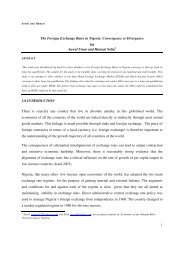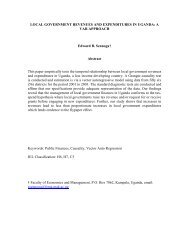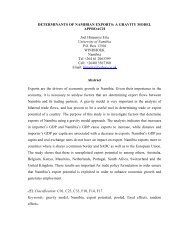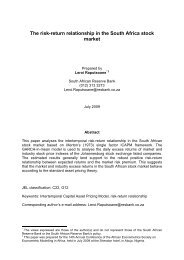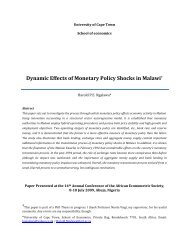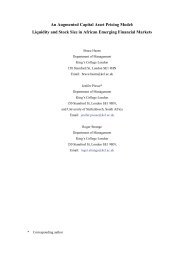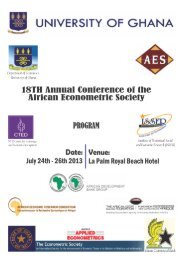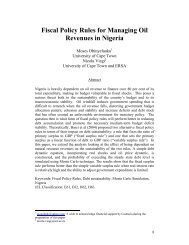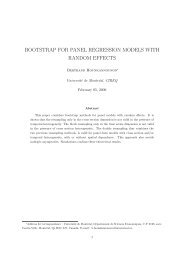Explaining Polarization and its Dimensions in Nigeria - African ...
Explaining Polarization and its Dimensions in Nigeria - African ...
Explaining Polarization and its Dimensions in Nigeria - African ...
Create successful ePaper yourself
Turn your PDF publications into a flip-book with our unique Google optimized e-Paper software.
conditions makes the country susceptible to dis<strong>in</strong>tegration if the regional differences <strong>in</strong> st<strong>and</strong>ards<br />
of liv<strong>in</strong>g cont<strong>in</strong>ue to grow. This could become a more <strong>in</strong>tense political issue when spatial<br />
<strong>in</strong>equality is perceived to be related to discrim<strong>in</strong>ation aga<strong>in</strong>st particular groups of citizens such as<br />
rural farmers (compared to urban residents), ethnic m<strong>in</strong>orities concentrated <strong>in</strong> remote areas,<br />
migrants <strong>in</strong> certa<strong>in</strong> districts, or religious groups <strong>in</strong> particular regions (Shorrocks <strong>and</strong> Wan 2004).<br />
This evidence underscores the need to go beyond conventional measures of <strong>in</strong>equality if concern<br />
is about political feasibility <strong>and</strong> cont<strong>in</strong>uity of reform policies as currently <strong>in</strong>itiated <strong>in</strong> <strong>Nigeria</strong>.<br />
So, the search light has been focused on the extent to which <strong>in</strong>come <strong>in</strong>equality has been socially<br />
embedded <strong>in</strong> <strong>Nigeria</strong>. Economic <strong>in</strong>equality can be said to be socially embedded when the rich<br />
<strong>and</strong> the poor are dist<strong>in</strong>guished not only by their wealth, but also by their language, ethnicity, race<br />
or other social characteristic (Zhang <strong>and</strong> Kanbur, 2001). The conjecture that motivates research<br />
on this phenomenon of polarization is that contrasts among homogeneous groups can cause<br />
social tension. One of the earliest works on polarization <strong>in</strong> <strong>Nigeria</strong> was done by Aighokhan,<br />
(2000) who showed concern <strong>and</strong> alerted the country on the danger of disappear<strong>in</strong>g middle class.<br />
He remarked that any government <strong>in</strong>terested <strong>in</strong> cont<strong>in</strong>uity <strong>and</strong> the susta<strong>in</strong>ability of <strong>its</strong> policies<br />
must show serious concern to what is happen<strong>in</strong>g to the middle <strong>in</strong>come group. Of recent,<br />
Awoyemi et al., (2009) reported the case of emerg<strong>in</strong>g <strong>and</strong> <strong>in</strong>creas<strong>in</strong>g level of bi-polarization<br />
result<strong>in</strong>g from persistent <strong>in</strong>crease <strong>in</strong> identification component of polarization <strong>and</strong> the grow<strong>in</strong>g<br />
proportion of <strong>Nigeria</strong>n poor at the bottom of the country <strong>in</strong>come distribution. This phenomenon<br />
is emerg<strong>in</strong>g <strong>in</strong> <strong>Nigeria</strong> as a result of some observed specific characteristics of different groups.<br />
This paper aims to give <strong>in</strong>sight <strong>in</strong>to the key underly<strong>in</strong>g factors fuel<strong>in</strong>g the sense of diversity that<br />
may lead to social tension <strong>and</strong> conflicts <strong>in</strong> <strong>Nigeria</strong>. Toward this, we analyze the <strong>in</strong>fluence of<br />
4



